Last year, LIG Nex1 achieved a record-high export volume, reaching KRW 778.3 billion, a near doubling compared to the previous year. This marks an astounding nine-fold increase in just three years, considering that exports stood at KRW 82.6 billion in 2021.
The proportion of overseas sales surged from 4.5% in 2021 to 15.5% in 2023, further expanding to 23.6% last year. The order backlog also more than doubled, increasing from KRW 8.3073 trillion in 2021 to KRW 20.0531 trillion by the end of last year.
LIG Nex1's performance has been rapidly improving due to escalating global geopolitical risks, such as the Russia-Ukraine war, conflicts in the Middle East, and the US-China rivalry, prompting countries worldwide to increase their military spending.
In particular, LIG Nex1 is making waves in the global arms market with its surface-to-air guided missile system, "Cheongung II" (also known as M-SAM II). Defense experts emphasize the power of Cheongung II, stating it is a "representative weapon of South Korea's air defense network that is in no way inferior to global interception systems like Iron Dome or Patriot."
Indeed, Cheongung II boasts a 100% hit rate, having successfully passed all test firings, quality certification firings, and local firings in the Middle East without a single failure. Beyond this proven quality, its competitive pricing and swift delivery times compared to other nations' weapons systems are significant advantages.
Thanks to this competitiveness, Cheongung II is dominating the Middle Eastern arms market. LIG Nex1 secured export contracts totaling KRW 2.6 trillion with the United Arab Emirates (UAE) in 2022, KRW 4.3 trillion with Saudi Arabia in 2023, and KRW 3.7 trillion with Iraq last year. However, LIG Nex1's exports in the first half of this year decreased by 20.5% year-on-year to KRW 321.4 billion. The overseas sales proportion, which accounted for 29.8% of total revenue in H1 last year, also declined to 17.3% in H1 this year.
This is attributed to the large scale of last year’s low-profit radio business in Indonesia; as that business has now concluded, the proportion of overseas sales has temporarily declined this year.
In the second quarter of this year, Cheongung II sales to the UAE reached KRW 73 billion, with cumulative sales totaling KRW 220 billion by the end of June, representing approximately 8% of the total KRW 2.6 trillion order.
Lee Sang-hyun, an analyst at BNK Investment & Securities, commented, "Once overseas orders fully materialize into revenue, profitability will accelerate due to the reflection of high-profit margins." He added, "Although the proportion of overseas sales may decrease to around 20% in 2026, profitability is expected to improve."
Lee Ji-ho, an analyst at Meritz Securities, also noted, "Over 50% of LIG Nex1's order backlog is for exports, with the majority estimated to be destined for the Middle East." He predicted, "Significant revenue from the mass production of UAE Cheongung II is expected to be recognized for the first time in the fourth quarter of this year."
LIG Nex1 is currently expanding its presence by increasing its overseas offices. It has recently grown its network from six existing local offices (US, Colombia, Indonesia, Malaysia, UAE, Saudi Arabia) to seven.
Earlier this month, the company opened a European representative office in Munich, Germany—its first such base in Europe since the company's inception. By positioning itself in Germany, strategically located in the heart of Europe, LIG Nex1 plans to actively establish cooperation frameworks with major European defense companies, spanning from research and development to production and marketing. Last month, its Middle Eastern hub in Saudi Arabia was relocated and expanded.
Meanwhile, LIG Nex1 is set to participate in 'ADEX 2025,' the largest domestic defense exhibition, next month. The company plans to showcase a range of its products to European and Middle Eastern stakeholders, including air-to-air and air-to-surface guided missiles, Cheongung II (M-SAM II), long-range surface-to-air guided missiles (L-SAM), drone and anti-drone systems, and satellite technologies.
Shin Haeju (hjs0509@fntimes.com)



















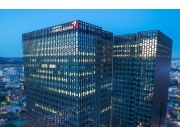

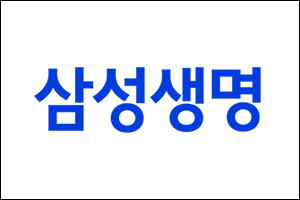











![[프로필] 김기덕 JB우리캐피탈 대표, 리테일·기업금융 역량 모두 갖춘 전문가](https://cfnimage.commutil.kr/phpwas/restmb_setimgmake.php?pp=006&w=69&h=45&m=5&simg=20251229212515046498a55064dd118222261122.jpg&nmt=18)

![황병우號 iM금융, 외부영입에 80년대생 전무까지…능력중심·가치경영 확대 [iM금융 2026 임원인사]](https://cfnimage.commutil.kr/phpwas/restmb_setimgmake.php?pp=006&w=69&h=45&m=5&simg=2025111415030600919300bf52dd2121131180157.jpg&nmt=18)
![신한·하나캐피탈 등 대표 교체 릴레이…새마을금고 품 안긴 MG캐피탈 성장가도 [한금 Pick 2025 금융이슈-캐피탈]](https://cfnimage.commutil.kr/phpwas/restmb_setimgmake.php?pp=006&w=69&h=45&m=5&simg=20251229203503038146a663fbf34175192139202.jpg&nmt=18)
![벤처캐피탈협회장 '젊은 피' 김학균 퀀텀벤처스 대표 당선 이변…새정부 출범 벤처 훈풍 [한금 Pick 2025 금융이슈-VC]](https://cfnimage.commutil.kr/phpwas/restmb_setimgmake.php?pp=006&w=69&h=45&m=5&simg=2025081621285900763dd55077bc212411124362.jpg&nmt=18)

![[프로필] 김성식 예금보험공사 사장 내정자, 30년 경력 법률 전문가](https://cfnimage.commutil.kr/phpwas/restmb_setimgmake.php?pp=006&w=69&h=45&m=5&simg=20251230181747040125e6e69892f5910240225.jpg&nmt=18)









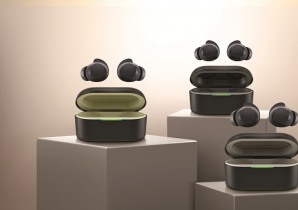

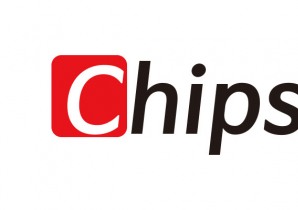
![[카드뉴스] KT&G, 제조 부문 명장 선발, 기술 리더 중심 본원적 경쟁력 강화](https://cfnimage.commutil.kr/phpwas/restmb_setimgmake.php?pp=006&w=298&h=298&m=1&simg=202509241142445913de68fcbb3512411124362_0.png&nmt=18)
![[카드뉴스] KT&G ‘Global Jr. Committee’, 조직문화 혁신 방안 제언](https://cfnimage.commutil.kr/phpwas/restmb_setimgmake.php?pp=006&w=298&h=298&m=1&simg=202503261121571288de68fcbb3512411124362_0.png&nmt=18)
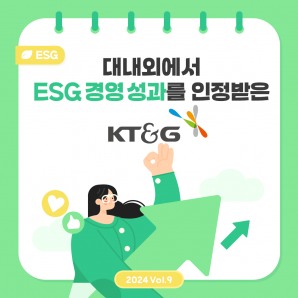

![[카드뉴스] 국립생태원과 함께 환경보호 활동 강화하는 KT&G](https://cfnimage.commutil.kr/phpwas/restmb_setimgmake.php?pp=006&w=298&h=298&m=1&simg=202403221529138957c1c16452b0175114235199_0.png&nmt=18)
![[신간] 고수의 M&A 바이블](https://cfnimage.commutil.kr/phpwas/restmb_setimgmake.php?pp=006&w=81&h=123&m=5&simg=2025091008414900330f8caa4a5ce12411124362.jpg&nmt=18)
![[신간] 리빌딩 코리아 - 피크 코리아 극복을 위한 생산성 주도 성장 전략](https://cfnimage.commutil.kr/phpwas/restmb_setimgmake.php?pp=006&w=81&h=123&m=5&simg=2025032814555807705f8caa4a5ce12411124362.jpg&nmt=18)
![[서평] 추세 매매의 대가들...추세추종 투자전략의 대가 14인 인터뷰](https://cfnimage.commutil.kr/phpwas/restmb_setimgmake.php?pp=006&w=81&h=123&m=5&simg=2023102410444004986c1c16452b0175114235199.jpg&nmt=18)

![[신간] 조금 느려도 괜찮아...느림 속에서 발견한 마음의 빛깔](https://cfnimage.commutil.kr/phpwas/restmb_setimgmake.php?pp=006&w=81&h=123&m=5&simg=20251105082239062852a735e27af12411124362.jpg&nmt=18)

![[AD] 기아 ‘PV5’, 최대 적재중량 1회 충전 693km 주행 기네스 신기록](https://cfnimage.commutil.kr/phpwas/restmb_setimgmake.php?pp=006&w=89&h=45&m=1&simg=20251105115215067287492587736121125197123.jpg&nmt=18)
![[카드뉴스] KT&G, 제조 부문 명장 선발, 기술 리더 중심 본원적 경쟁력 강화](https://cfnimage.commutil.kr/phpwas/restmb_setimgmake.php?pp=006&w=89&h=45&m=1&simg=202509241142445913de68fcbb3512411124362_0.png&nmt=18)
![[AD]‘황금연휴에 즐기세요’ 기아, ‘미리 추석 페스타’ 이벤트 실시](https://cfnimage.commutil.kr/phpwas/restmb_setimgmake.php?pp=006&w=89&h=45&m=1&simg=20250903093618029117492587736121166140186.jpg&nmt=18)
![[AD]‘패밀리카 선두 주자’ 기아, ‘The 2026 카니발’ 출시](https://cfnimage.commutil.kr/phpwas/restmb_setimgmake.php?pp=006&w=89&h=45&m=1&simg=2025081810452407346749258773621116810840.jpg&nmt=18)
![[AD] ‘상품성↑가격↓’ 현대차, 2025년형 ‘아이오닉 5’·‘코나 일렉트릭’ 출시](https://cfnimage.commutil.kr/phpwas/restmb_setimgmake.php?pp=006&w=89&h=45&m=1&simg=202505131018360969274925877362115218260.jpg&nmt=18)




